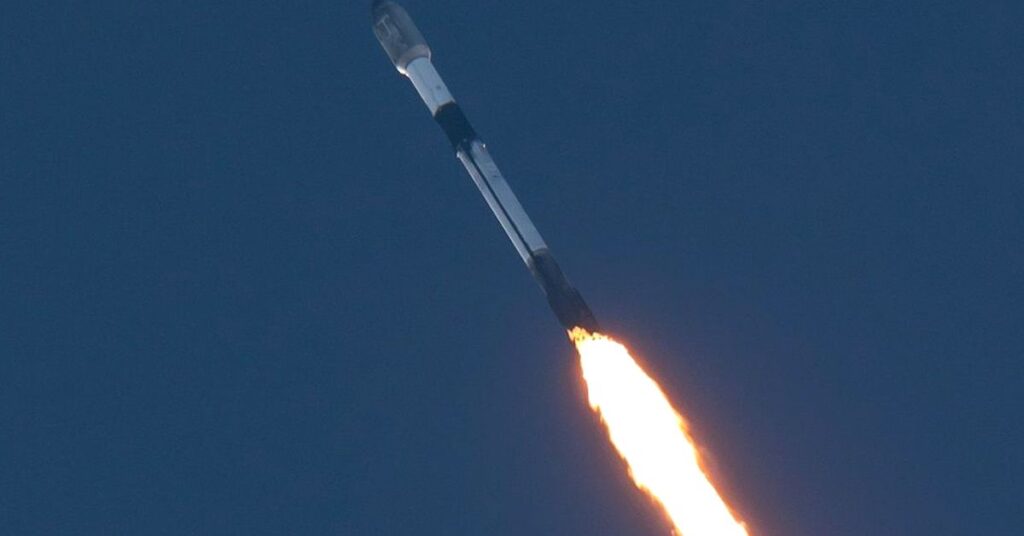SpaceX has completed its investigation into the cause of the engine failure during the Falcon 9 launch on July 11. The company has submitted an “incident report” to the Federal Aviation Administration (FAA) and is preparing to return the Falcon 9 rocket to flight as soon as tomorrow.
The company’s investigative team, working with the FAA, determined that the July 11 failure was caused by a liquid oxygen leak that occurred during the initial combustion of the Falcon 9’s second-stage engine. The leak is said to have originated from a crack in a pressure sensor sensing wire that is part of the rocket’s oxygen system. Often the clamps that restrain the sensing wires become loose, subjecting them to excessive vibration from the engine, eventually causing them to fatigue and crack.
A statement on the SpaceX website said liquid oxygen leaking from the Falcon 9 rocket’s upper stage caused “excessive cooling of engine components, most importantly those associated with delivering ignition fluid to the engine.” Instead of a second controlled burn, the engine experienced what SpaceX describes as a “hard start,” causing damage to the engine and causing the upper stage to lose altitude control.
Falcon 9’s first stage performed as expected during the July 11 launch and landed safely for reuse, but a second-stage mishap resulted in the Falcon 9 carrying Starlink satellites being deployed in a lower orbit, “There is an extremely high drag environment” there, causing all 20 satellites to re-enter the Earth’s atmosphere and hopefully burn up.
To get the Falcon 9 back in flight as quickly as possible, SpaceX engineers will simply remove the failed sensing wires and sensors on the second-stage engine. “This sensor is not used by the flight safety system and can be overridden by a replacement sensor already on the engine.” The company also inspected, cleaned and replaced some sensing wires and fixtures on the Active Booster Group. SpaceX has been testing the changes at its facility in McGregor, Texas, under the supervision of the Federal Aviation Administration (FAA).
Now that the investigation is complete, the Falcon 9 rocket is no longer grounded and can be put back into service. The company’s website states that SpaceX plans to conduct the next Falcon 9 launch at 12:21 pm ET on July 27, carrying 23 Starlink satellites from NASA’s Kennedy Space Center, with launches later that day and July 28 There will be additional launch window opportunities on the same day.

